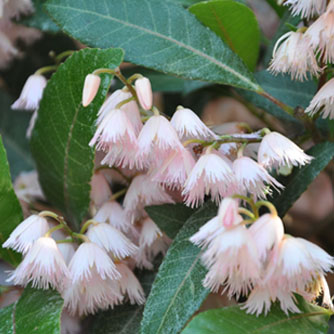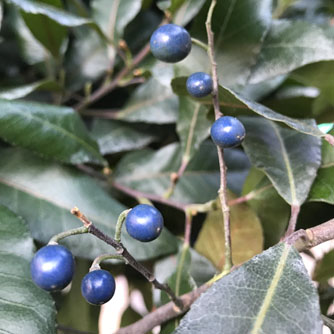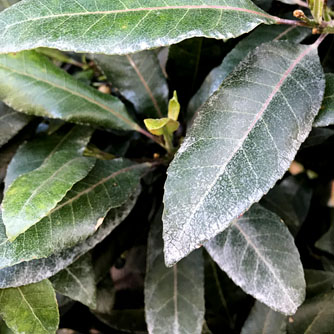Blueberry Ash
BackBlueberry Ash (Elaeocarpus reticulatus) is a fabulous Australian rainforest tree that is very adaptable and grows naturally from Queensland right down to Tasmania. It looks great in many different garden styles including cottage, seaside, formal or native and can be grown as a feature tree, screen or just in a large pot on a balcony.
In spring and summer the trees are covered in soft white or pink frilly flowers, followed by blue berries that last through winter and often into the next spring. Both the flowers and the fruit are loved by birds. The leaves are attractive too with bronze/pink new growth that changes to green as they age. Every now and then the odd old leaf will change to a deep red colour before it falls so there’s always something interesting happening.
How To Grow Blueberry Ash
Blueberry ash are narrow, slow growing trees. Height ranges from 8m-15m depending on local conditions but they only spread 3m-4m wide. This natural narrow shape makes them useful as a screening or hedging plant.

Dainty blueberry ash flowers
Blueberry ash are pretty versatile trees which are best planted in a sunny position but can handle light shade. They prefer a rich, moist soil which drains well but will also grow in dry sandy soils and coastal conditions. They can tolerate clay too as long as it doesn’t remain waterlogged.
Despite their versatility we still recommend improving sandy soils with some compost/manure before planting. For clay soils add gypsum to improve drainage. Once planted apply OCP eco-seaweed to the base of the tree to help it settle in. Mulch well to conserve moisture and keep weeds at bay.
Not recommended for cold areas with heavy frosts. In milder areas young trees will need protection from light frosts until established.
Fertilising & Maintenance of Blueberry Ash
One of the best things about blueberry ash is that they need very little maintenance. Young trees can be given OCP eco-seaweed and OCP eco-aminogro every 2-4 weeks to encourage strong growth but established trees will be content with being fed only once or twice a year with compost/manure/pelleted organic fertiliser (spring and autumn).
Pruning is only necessary if being grown as a hedge and is best done after flowering.

No prizes for guessing where the name blueberry ash comes from :)
Pests & Disease Problems of Blueberry Ash
The good news is that blueberry ash are usually trouble free. Occasionally you might have problems with the following things:
- Scale - watch out for these common sap suckers and spray with an organic insecticide as required.
- Sooty mould – spray thoroughly with OCP eco-oil and the sooty mould will eventually fade away. A follow up spray a week later is recommended. More commonly seen in stressed trees so give them a few doses of OCP eco-seaweed to help reduce stress levels and see if there’s anything else needed, e.g. changing watering habits or improving the soil.
- Caterpillars – rapidly disappearing leaves will most likely be due to caterpillars! Rarely an issue on established trees but on a young tree they’re worth controlling with OCP eco-neem.
- White film on leaves – white markings can develop either as a line along the leaf edge or as a light coating all over. This is normal and nothing to worry about.

Natural white markings on leaves sometimes develop and can be ignored


